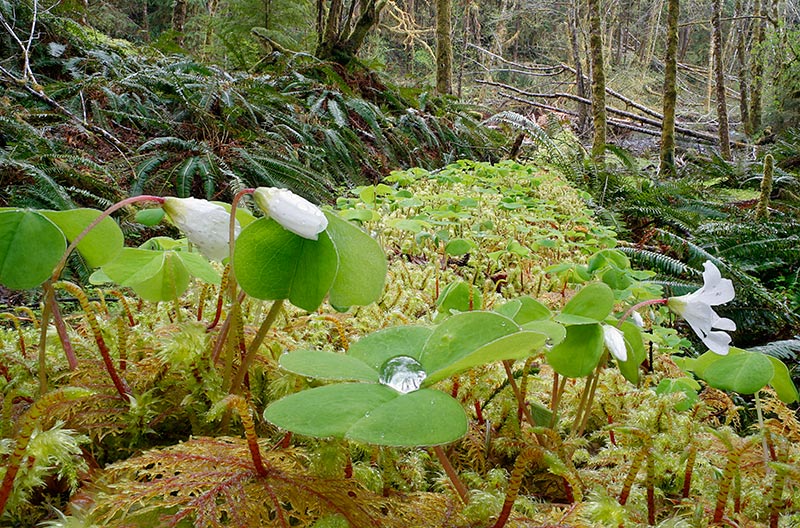Now... these are "stacks"
The upper image is of Oregon Oxalis (Oxalis oregana) growing along the top length of an old blown down tree. I believe the moss that covers the log is Stair-step moss (Hylocomium splendens).
The lower image is a mushroom (no ID) growing at the base of a tree.
These are an attempt to show these subjects while simultaneously showing the dense vegetation of the rain forest environment where they are found.



